C. Belmont's Local Historic Districts
Local Historic Districts
Pleasant Street Historic District
Belmont’s first historic district, the Wellington Historic District, initially consisted of two residences on Pleasant Street (641 and 631 Pleasant Street) and was later expanded and renamed the Pleasant Street Historic District. The Pleasant Street Historic District runs along Pleasant Street from Stella Road to Snake Hill Road, and is approximately bounded on the north by Wellington Lane and on the south by Leonard Street. The Town Hall complex of buildings at the corner of Pleasant Street and Concord Avenue is also within the Pleasant Street Historic District. in addition to being a Local Historic District, the Pleasant Street District was also added to the National Register of Historic Places in 1979. |  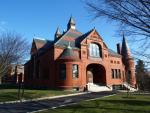  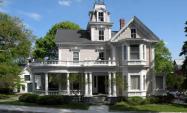  |
Common Street Historic District
The Common Street Historic District includes the stone railway bridge over Concord Avenue, the War Memorial and the Wellington Station, however, Belmont Station (now serving as the Lion's Club) is not within the Common Street Historic District.
*Historic photo courtesy of Belmont Historical Society | 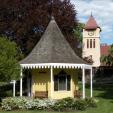 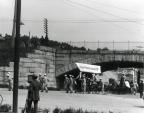 |
Richardson Farm Historic DistrictInformation on the Richardson Farm Historic District will be added shortly. | |
Thaddeus Frost House Historic District
Click here for information on the Historic District Commission's efforts to date regarding creation of the Thaddeus Frost House Historic District. | 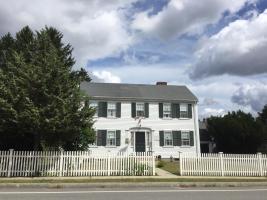 |
Living in a Local Historic District
Why create Local Historic Districts?
The distinctive and highly desirable character of Belmont is largely due to the breadth, quantity, and diversity of the town’s architecture and historic properties. Throughout Massachusetts, local historic districts have preserved the character of many neighbourhoods, ensuring that the historic built environment will survive for future generations to enjoy, providing a visual sense of the past, and instilling pride in community. The intent of a local historic district is to ensure that changes and additions are harmonious, and to prevent the intrusion of incongruous elements that might detract from the aesthetic and historic values of the district. The purpose of a local historic district is not to halt growth, but to allow for the thoughtful consideration of change.
What is required?
A resident in a historic district is required by law to seek and receive approval for any applicable exterior alterations prior to the commencement of work. In Belmont, the Historic District Commission (HDC) oversees the review process associated with improvements proposed in the local historic districts.
What is the Design Review and Application Process?
A building permit for construction, alteration, or demolition of an exterior architectural feature or building within a historic district cannot be issued without one of the following certificates:
Certificate of Appropriateness
A Certificate of Appropriateness is required for all exterior alterations visible from a public way. In general, this applies to exterior alterations, new additions, changes to color or materials, or changes to man-made landscape features.
Certificate of Non-Applicability
A Certificate of Non-Applicability certifies that a Certificate of Appropriateness is not required for the intended work. A Certificate of Non-Applicability is required for additions, alterations or new construction not visible from a public way; temporary structures; or reconstruction (within 1 year) of a feature damaged by fire or natural disaster.
Certificate of Hardship
Thinking of repainting?
If you're keeping the same color, you will need to apply for a Certificate of Non-Applicability. However, if you're looking to change the color you will need to apply for a Certificate of Appropriateness. Either way, it is always recommended that you meet with the HDC for an informal discussion before submitting a formal Application.
More information on what colors are appropriate for specific architectural styles and periods can be found here.

